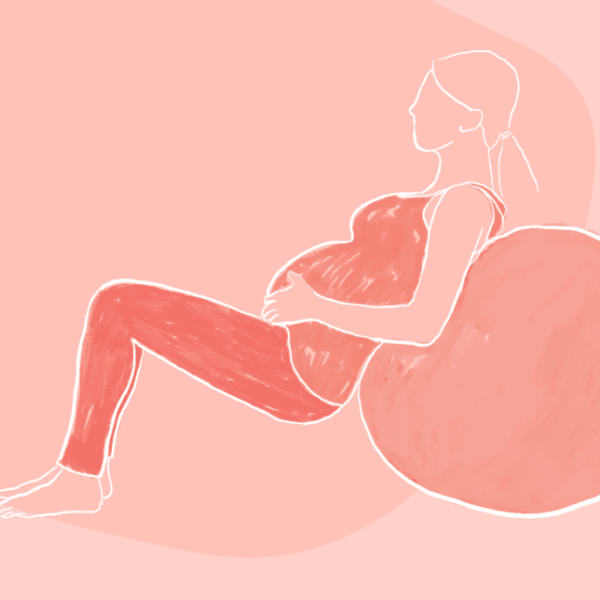Birth Birthing Ball for Labour
Birthing Ball for Labour

Choosing the correct size birthing ball for pregnancy can be tricky. Here are the key things to keep in mind for choosing your yoga or exercise ball for use in pregnancy or birth.
What size exercise ball is correct for pregnancy and birth?
To determine if you are using the correct size yoga ball, for pregnancy try sitting on your birth ball, and place your feet flat on the floor in front of you. Your hips should be either exactly even with your knees, or a little higher- approximately 5-8 centimetres higher, according to experts.
This position brings the weight of the baby forward, giving relief from back pain and general discomfort associated in pregnancy. This position also helps keep the pelvis open and relieves some of the pressure on your lower back during your labour and contractions.
If your hips are lower than your knees, it’s not only uncomfortable, but it narrows the pelvic opening- which isn’t good for the baby’s positioning.
As a general guide, the following-sized balls are appropriate for these nights.
- 55 cm ball – if your height is under 162 cm
- 65 cm ball – if your height is 162 cm – 177cm
- 75 cm ball – if your over 177 cm in height
Why should you use an exercise ball or yoga ball in birth?
During labour, the exercise ball can help to reduce the pain of your contractions. You may find you instinctively sway and rock in rhythm with your contractions and a birthing ball gives great support for this. Keeping you actively moving and supported.
The gym or exercise ball can also help you maintain upright positions, which lets gravity take some effect. Sitting on the ball with your legs wide apart can help open your pelvis ready for birth.
What is a peanut ball?
A peanut ball is a yoga ball that is shaped like a peanut. It has two larger ends that taper in at the middle. During labour, you place a peanut ball between your legs to help you progress through the stages of labour.
Using the peanut ball is particularly helpful if you have had an epidural as you can rest your legs on the ball to keep the pelvis open. A peanut ball’s curves help to encourage your body to relax in a way that speeds up the dilation of your cervix.
How to use the peanut ball
Semi-reclining position. Using a peanut ball while you lean back helps you to dilate and your baby to drop lower. In this position, you place one leg over the peanut ball and your other leg to the side of it. You can alternate positioning each leg on top or to the side when you need to move.
Side-lying position. This position is a great way to encourage your baby to move into an optimal position for birth. Lay on one side or the other and place the ball between your legs with one leg propped up on top. Your midwife may bend your top leg over the narrow part of the ball to open your pelvis more.
Our Podcast Picks for You
Categories
Related Products
-
The Birth Class
108 reviews$249.00The empowering online childbirth education program that will help you confidently prepare for birth.
Get your copy of our Perineal Massage Guide in your inbox
Keep Reading
We think you might enjoy these articles
@AustralianBirthStories
Follow along with us
@AustralianBirthStories
Follow along with us
@AustralianBirthStories
Follow along with us
@AustralianBirthStories
Follow along with us
@AustralianBirthStories
Follow along with us
@AustralianBirthStories
Follow along with us
@AustralianBirthStories
Follow along with us
@AustralianBirthStories
Follow along with us
@AustralianBirthStories
Follow along with us
@AustralianBirthStories
Follow along with us
@AustralianBirthStories
Follow along with us
@AustralianBirthStories
Follow along with us










